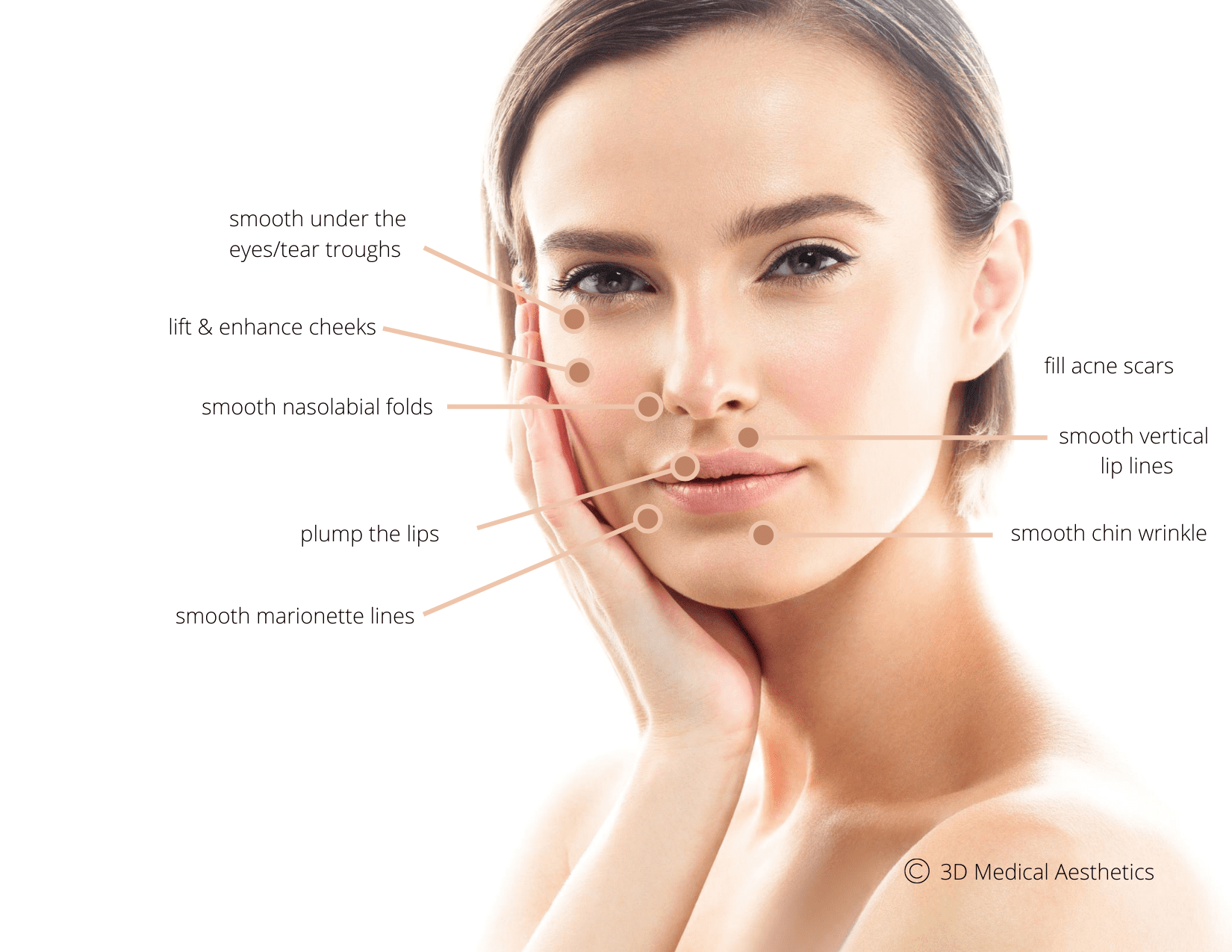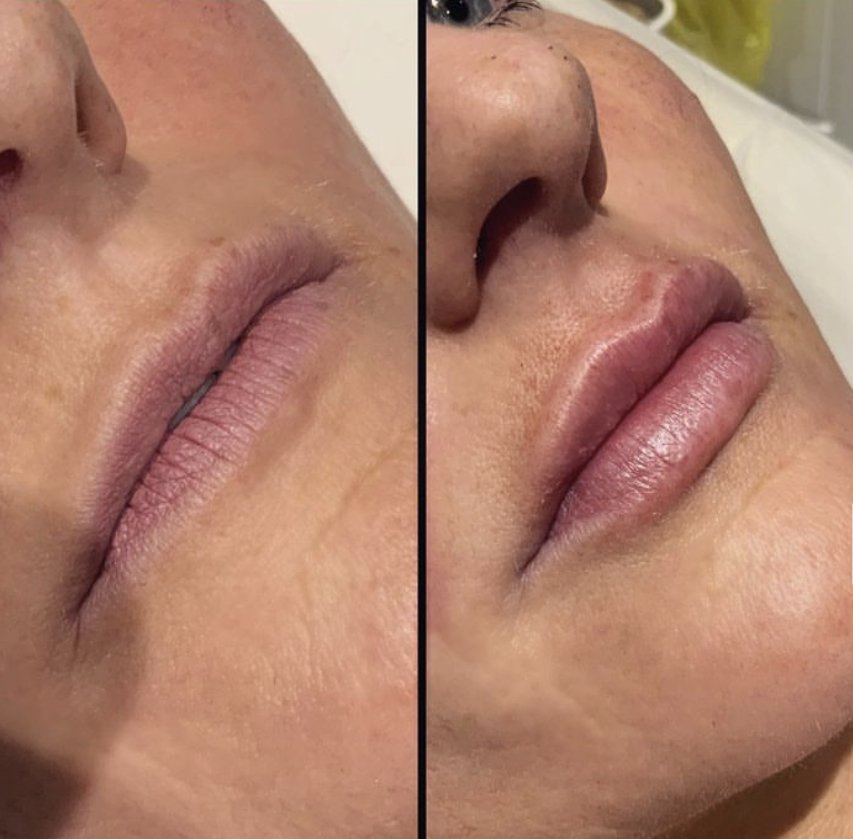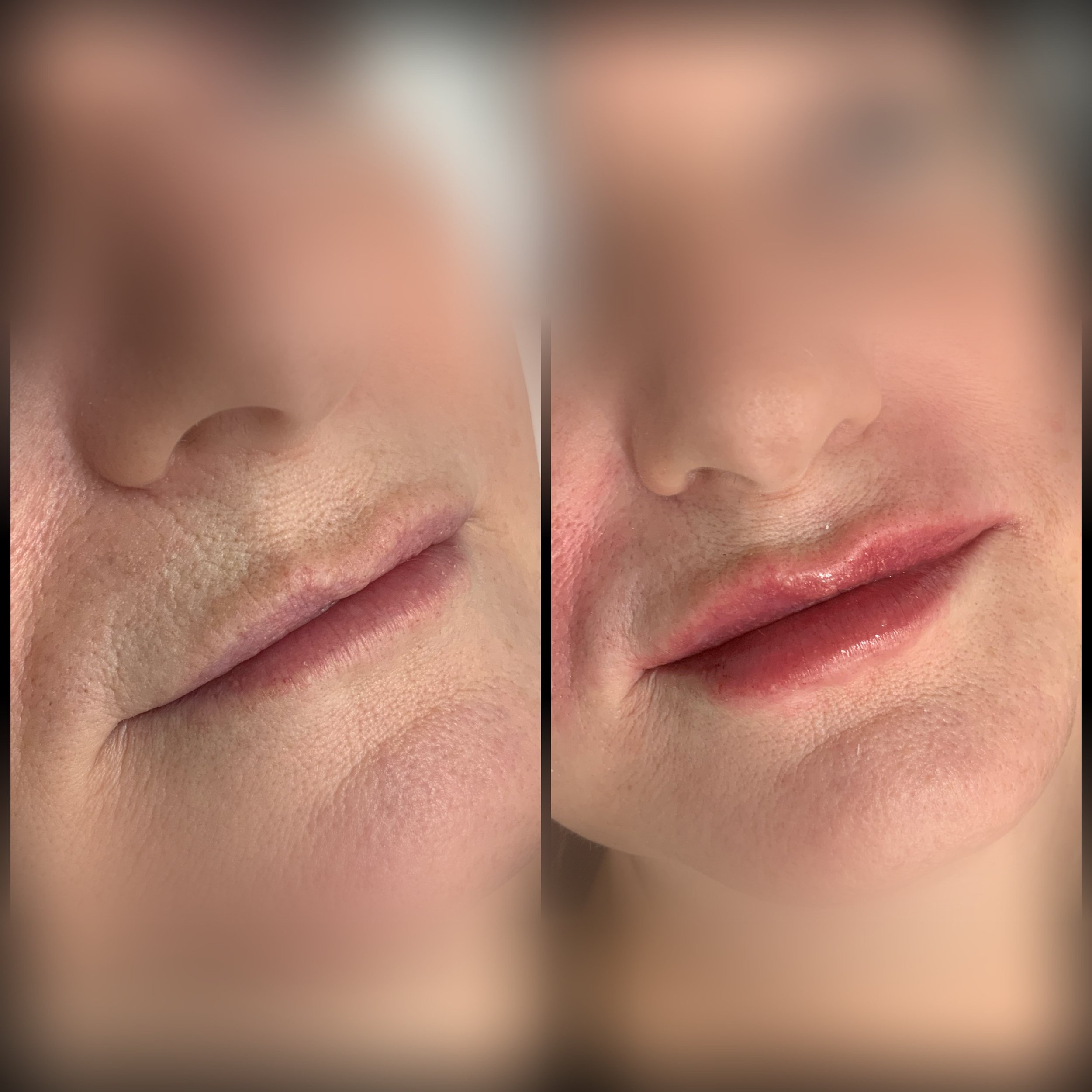
Dermal Filler

What is Dermal Filler?
Face and lip fillers (dermal fillers) are substances injected into your face. They fill lines and wrinkles and add volume to areas such as your lips or cheeks


What happens at your appointment for face and lip fillers?
An anaesthetic cream will be used first to numb your skin. Injections are given around the area of your face being treated, which is then massaged.
It might feel uncomfortable.
The treatment usually takes between 20 and 30 minutes, depending on the area being treated.
Afterwards
The affected area may be a bit red, sore and swollen. Any swelling or bruising should settle down in a matter of days.
You should will be advised about what to do to help reduce the risk of side effects.
This includes not wearing make-up immediately after the procedure and avoiding alcohol, coffee and the sun.
Filler Facts
Fillers are not permanent. How long they last depends on things like the type of filler and where it's injected. They usually last between 6 and 18 months.
HA is highly soluble and can hold water in greater quantities than its own weight.
HA is highly soluble and can hold water in greater quantities than its own weight.
If you have fillers, the rest of your face will continue to age as normal.
It’s Immunological tolerance, ability to assist in the regeneration of collagen and excellent absorption properties make the HA molecule an excellent
candidate for volumising and mositurising the skin.
However, HA in its natural state has a rapid turnover through enzymatic and free radical degradation with a half-life of 24hr in vivo. Therefore to be considered as a cosmetic treatment, HA must be chemically modified to prevent decomposition. This process transforms HA from a liquid into a gel by crosslinking Hyaluronic acid polymer chains to one another.
This crosslinking modification allows HA to fill wrinkles and maintain it’s shape for a longer period of time.The more links that are generated through the crosslinking reaction, the longer it takes for the skin to break down the cross-linked Hyaluronic acid
You Must be 18 to have this treatment
Risks
The risks of dermal fillers are relatively low and can depend on whether the procedure was done by a qualified practitioner, whether the procedure was done correctly and the type of filler used.
Serious problems are rare but can include:
infection
a lumpy appearance under the skin
the filler moving away from the intended treatment area
blocked blood vessels in the face
What to do if you have problems
If you've had dermal fillers and you're not happy with the results, talk to your practitioner at the clinic where you were treated. If your in an emergency situation and need removal contact us or ACE group who deal with complications and vascular occlusions world wide.


